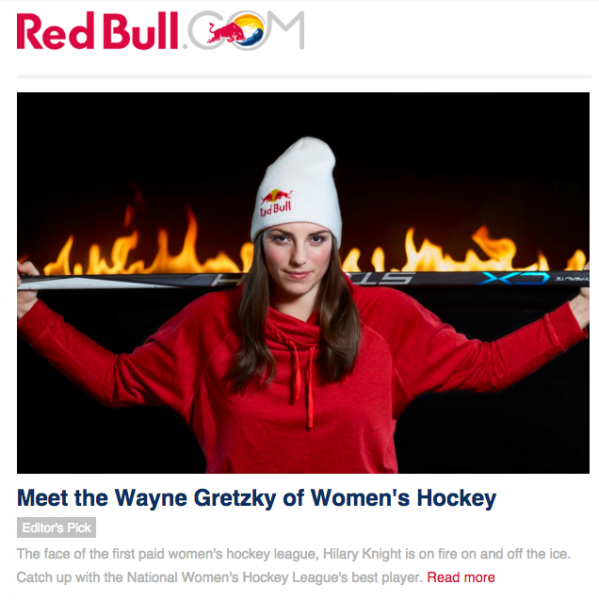When brands work on their content marketing strategy, the focus is often on the written word. Discussions typically focus on blog topics that resonate with readers, formats that work best and marketing tactics to promote the content. The conversations often overlook one very important component: imagery.
Think of content and images as a married couple. Red Bull, the brand that sponsors extreme sports to promote its energy drink, understands this relationship more than most.
Here’s a look at how Red Bull uses imagery to complement its content:
Multiple images used in each post
A recent survey shows 39 percent of marketers believe they should devote more of their budget to source or create compelling visuals, and yet when marketers use images it’s usually a stock photo that serves as a placeholder.
With Red Bull content, there are multiple, high-quality images that are in each post. Take a look at this article that highlights the first women’s paid hockey league. The article focuses on the team’s main player, Hilary Knight.
Throughout the article you’ll find three eye-catching photos of her, plus a video.
The content keep a reader’s attention. Even if a reader doesn’t commit to reading the entire article, the images encourage you to scroll through the content just to see the pictures.
Research shows that colorful images can increase a reader’s attention span and recall by 82 percent. In the world of content marketing, increasing attention span and recall are crucial factors to success.
Images that are related to the content
It’s not always easy to find images that relate to each individual piece of content, especially for hard-to-visualize industries. However, Red Bull makes a commitment to ensure every piece of content has images that are tailor-made for each article.
How can more brands follow suit? Create content about actual people. Tell a success story, highlight a business that uses your product or service or feature employees that work in the office. All of these topics lend themselves to photos that are specific to the content created.
Use photos to promote content
To spread the word about great content, Red Bull sends fans updates via email. The company highlights the most recent content in a newsletter. Here’s a snapshot of one:
Notice how the image does most of the talking. There’s very little text with a call to action that directs readers to “Read More” if they’re interested.
Wrap up
As your team works to improve its content marketing strategy, try not to divorce images from your content. Encourage writers to take pictures, or spend some real time combing through stock photo options to find images that spark interest and relate to your content.





